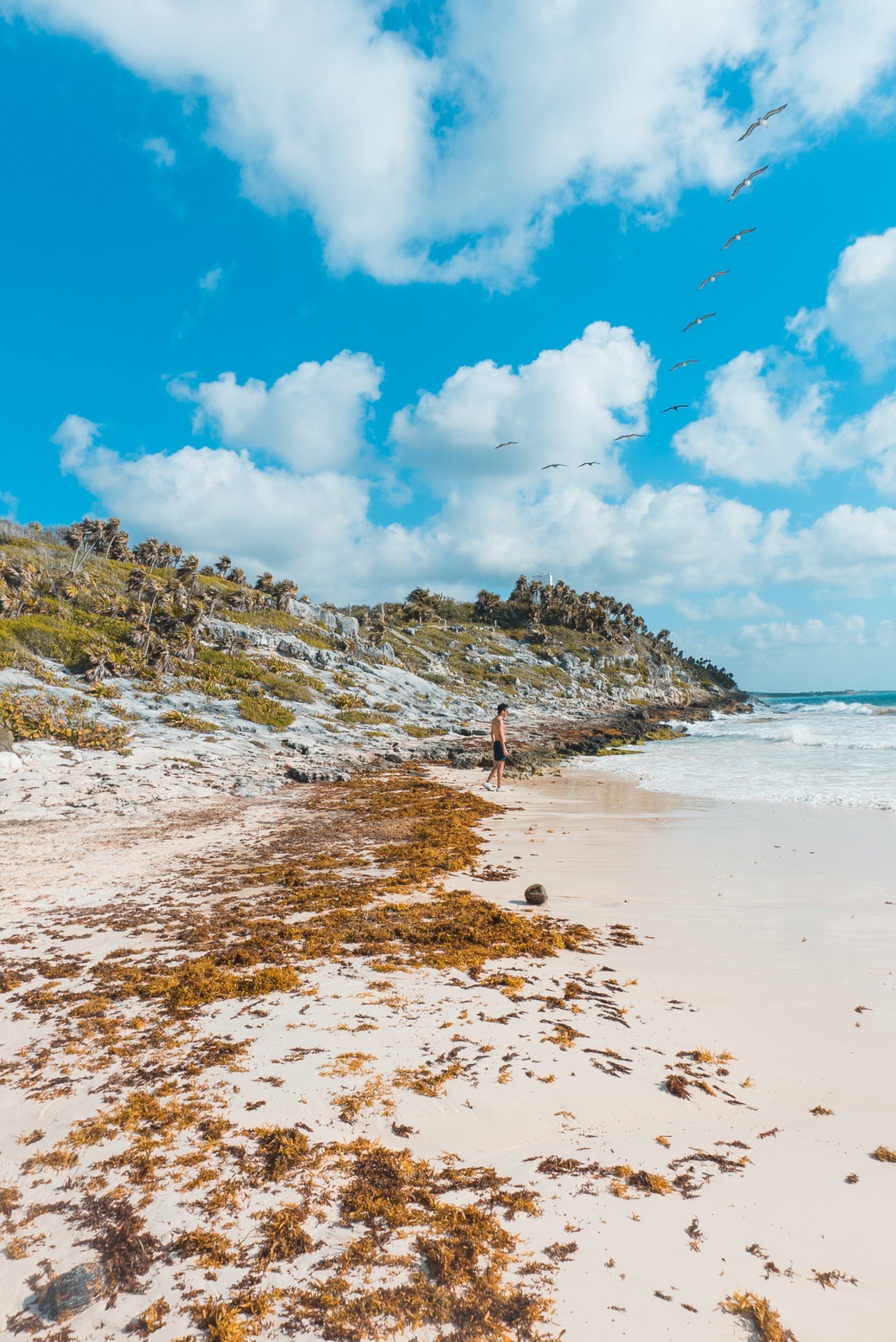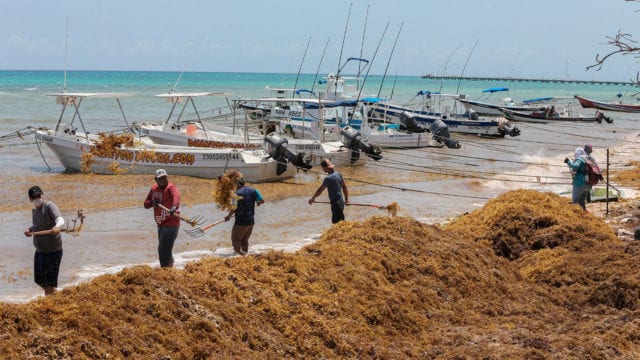Sargassum in Mexico.

The problems:
Sargassum, a problem with creative solutions? If you have been on vacation in the Riviera Maya and have had the sargassum experience, we are so sorry. Sargassum levels change over the years, but they have risen considerably these last few years, bringing a terrible smell and not so pretty views. Hopefully, you were one of the lucky ones that didn’t get to experience this. Thankfully, people are coming up with creative solutions for this natural phenomenon.
In Mexico, sargassum seaweed season is generally between May and October each year. If you travel to the Caribbean coast of Mexico outside of that time period you can generally expect to avoid large mats of seaweed on the beaches.
The search for a solution has never stopped. Sargassum has occasioned great discomfort for locals and tourists. For years, the government has encouraged students and professionals to seek a way to reuse sargassum to help prevent this event from becoming disastrous. Sargassum not only causes severe damage to tourism in the Caribbean, but it actually has great benefits in the sea. And although Mexico is one of the most affected countries, researchers have found a way to turn it into fertilizer, a base for cosmetics and vegan leather.
Sargassum is really very important for marine biota. Picture a jungle in your mind, a place so diverse where not only there are trees but a variety of animals too. That is sargassum, a home and food for a lot of fish, crustaceans, especially shrimps and polychaete crabs.
In the world
This phenomenon is affecting beaches all over the continent. In Miami, in the United States, they are suffering the ravages of sargassum on the public beaches. There are days when the sun rises a lot more, and there’s no sargassum, when the currents come from the north, so the entire beach is cleaned.
The University of South Florida points out that last April the top record was broken. There were 40 million tons of sargassum in a park in the state of Florida. The United States is another country that is being affected economically, socially and environmentally. The sargassum belt is all over the Atlantic, from Africa to Brazil and sooner or later it will reach other parts of Mexico. In Quintana Roo alone, marines have taken more than 37,000 tons of sargassum, more than the Eiffel Tower’ weight.
The problems on the coast are terrible depending on the season.That is when health problems rise due to sargassum. When sargassum starts to decompose, it releases toxins in the air that are dangerous for people to inhale. Many have suggested burning the sargassum, but it is the same result. The gas caused by the fire is also toxic.
When decomposition happens on the beaches the water turns brown, killing everything underneath. Recent researchers collect sargassum from different parts of the world to see the amount of toxins it has and how it affects the environment.
Mexico
In Mexico, sargassum is already being transformed as a base fertilizer, for cosmetics and vegan leather
Its potential has been observed when using a liquid extract obtained from this seaweed in bean crops with positive effects when measuring parameters such as growth rate
root length, stem height, leaf size, and increased yield. This is due to the fact that it provides elements and minerals. Biomolecules such as metabolites, carbohydrates and vitamins allow the soil to improve its chemical, physical and biological properties.
In the meantime, entrepreneurs of the region are still looking for ways to monetize this waste. They are experimenting with products based on seaweed, including animal food, gas, construction material and even cocktails…
Researchers are also looking for medical or nutritional uses for sargassum.
What is for sure is that the commercialization of sargassum can be a tough market. Despite this, creativity is blooming alongside the seaweed, that’s for sure.

The solutions:
As mentioned before, some people are actually making construction material out of sargassum. That is the case of Omar Vazquez, a resident of Puerto Morelos, who has invented the sargassum block. He has successfully built and donated 10 houses of such material and locals named him “Señor Sargazo” (Mr. Sargassum), and have called the sargassum blocks “Sargablock”. Sargablock has now been patented.
Mr. Vazquez heard people complain about how bad the sargassum smelled, so he seeked a solution. At 45 years of age, Mr. Vazquez build “Casa Angelita”, the first building made out of Salgablocks.
On the other hand, the Ritz-Carlton Hotel in Cancun found a more appetizing solution. For a period of time, they served an elaborate cocktail with tequila, vinegar, sugar, rosemary and syrup that came from sargassum.
In Barbados, a research team from the University of Indias Occidentales are distilling sargassum with leftovers from a rum distillery to produce methane. Methane can be turned into a natural compressed gas used to boost different types of transportation in the island, including cars.
